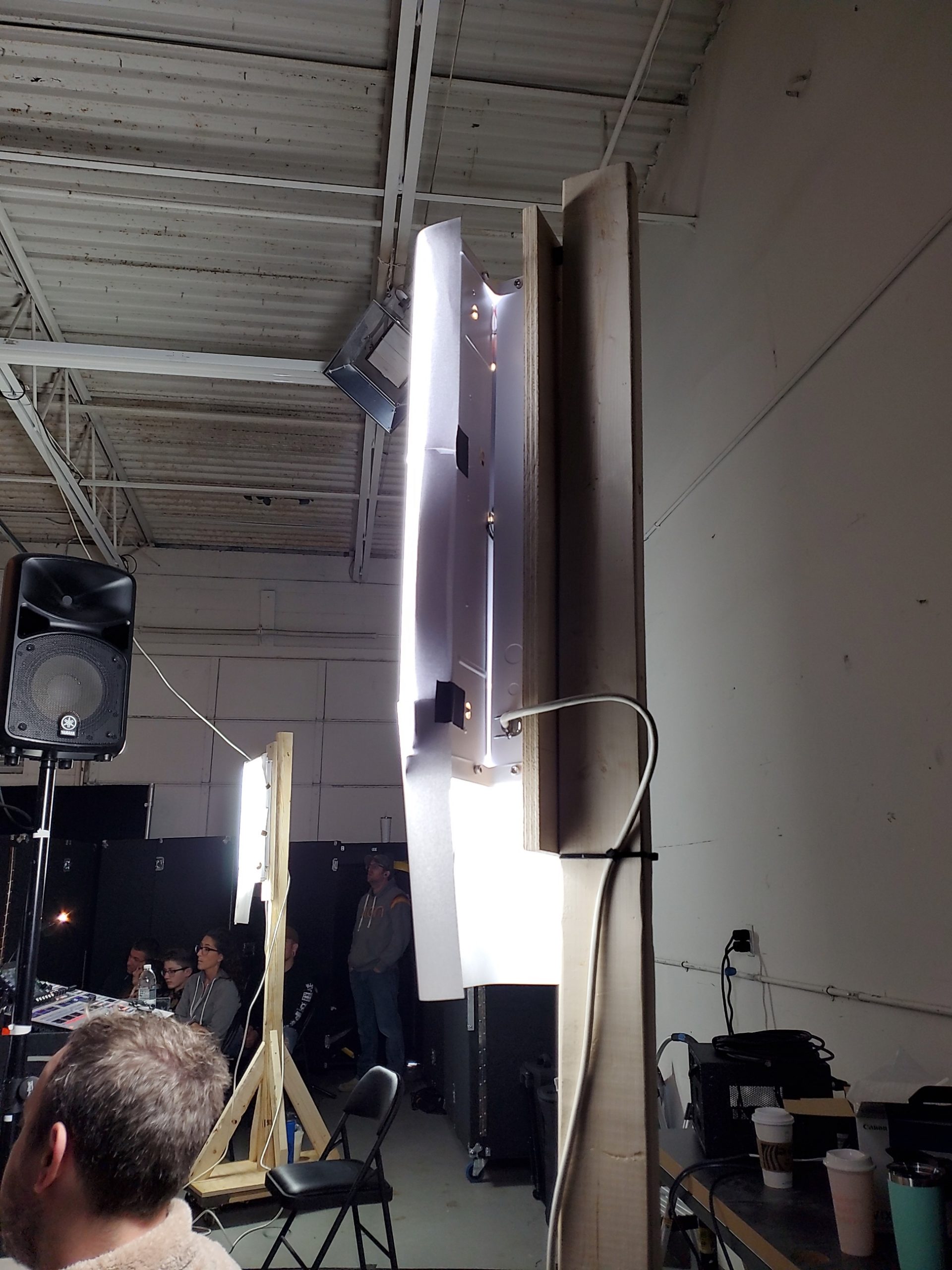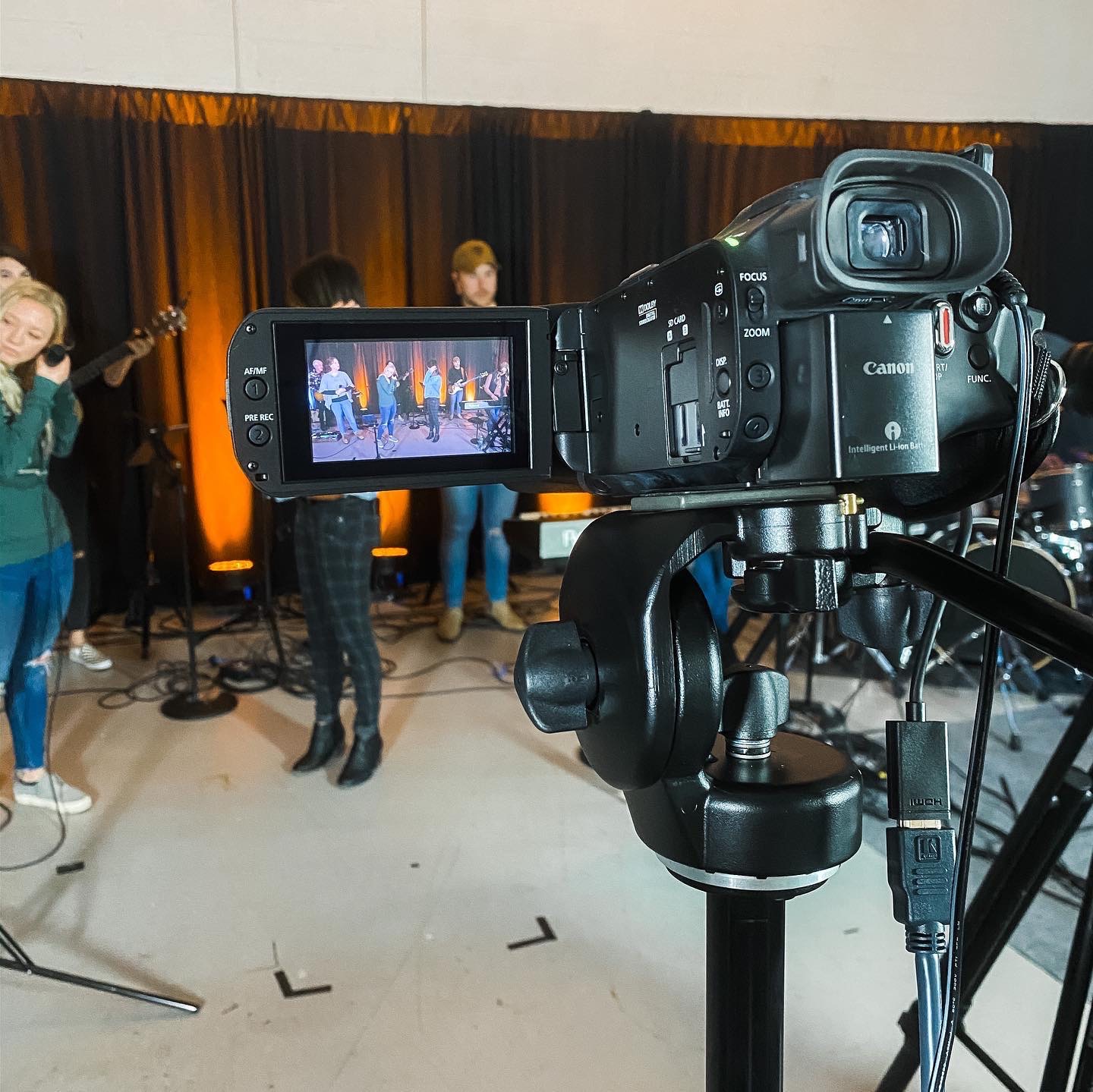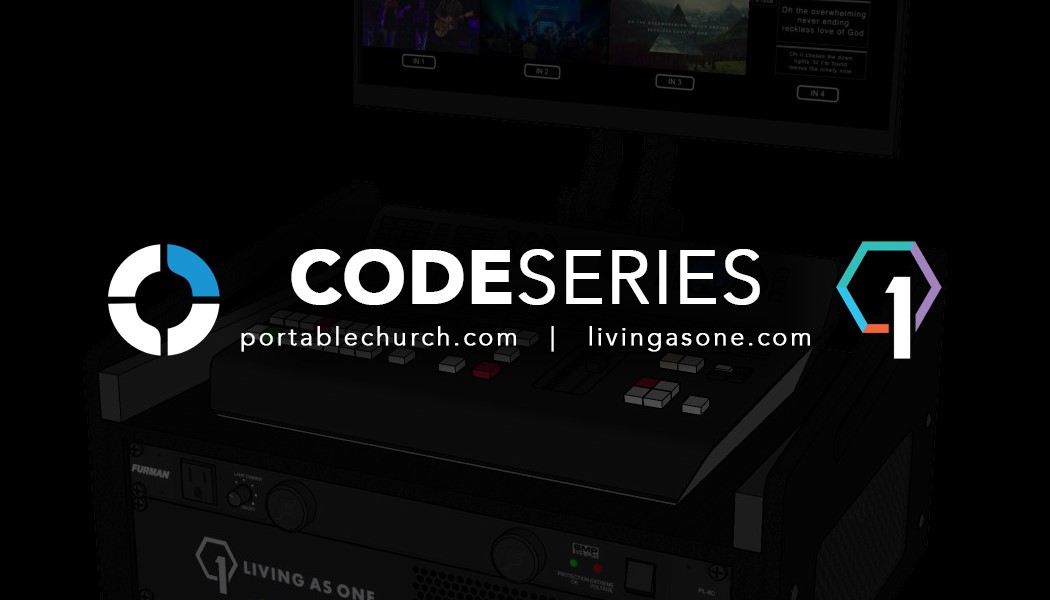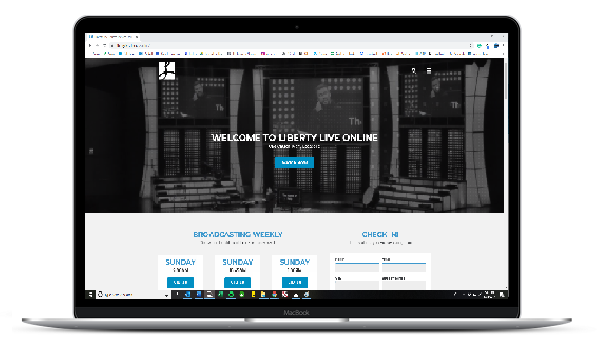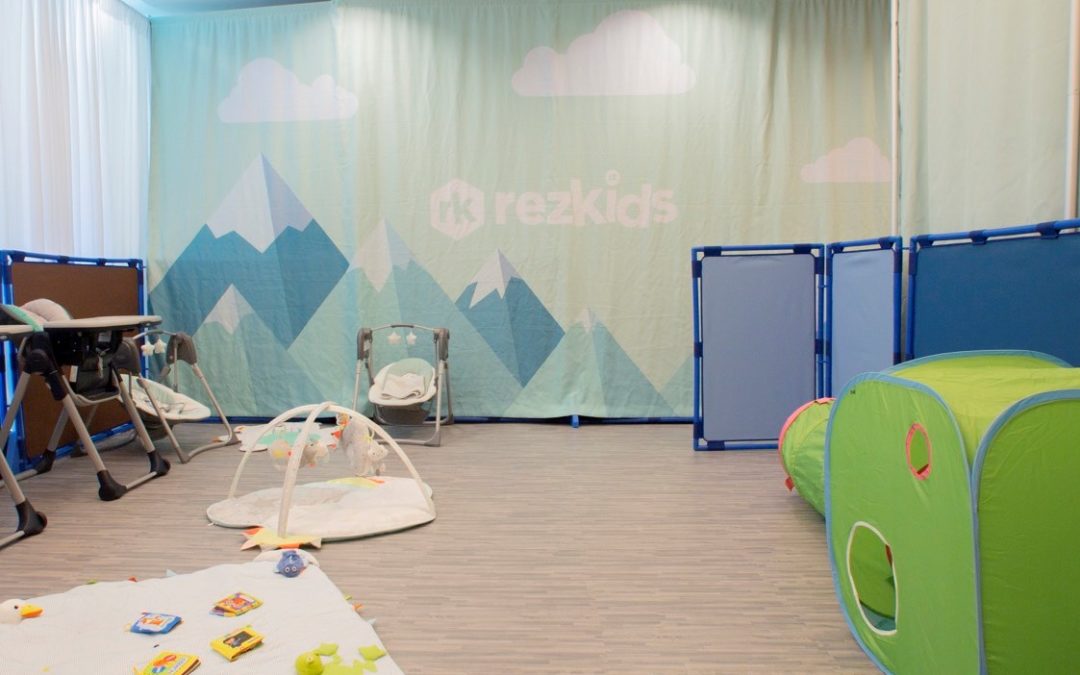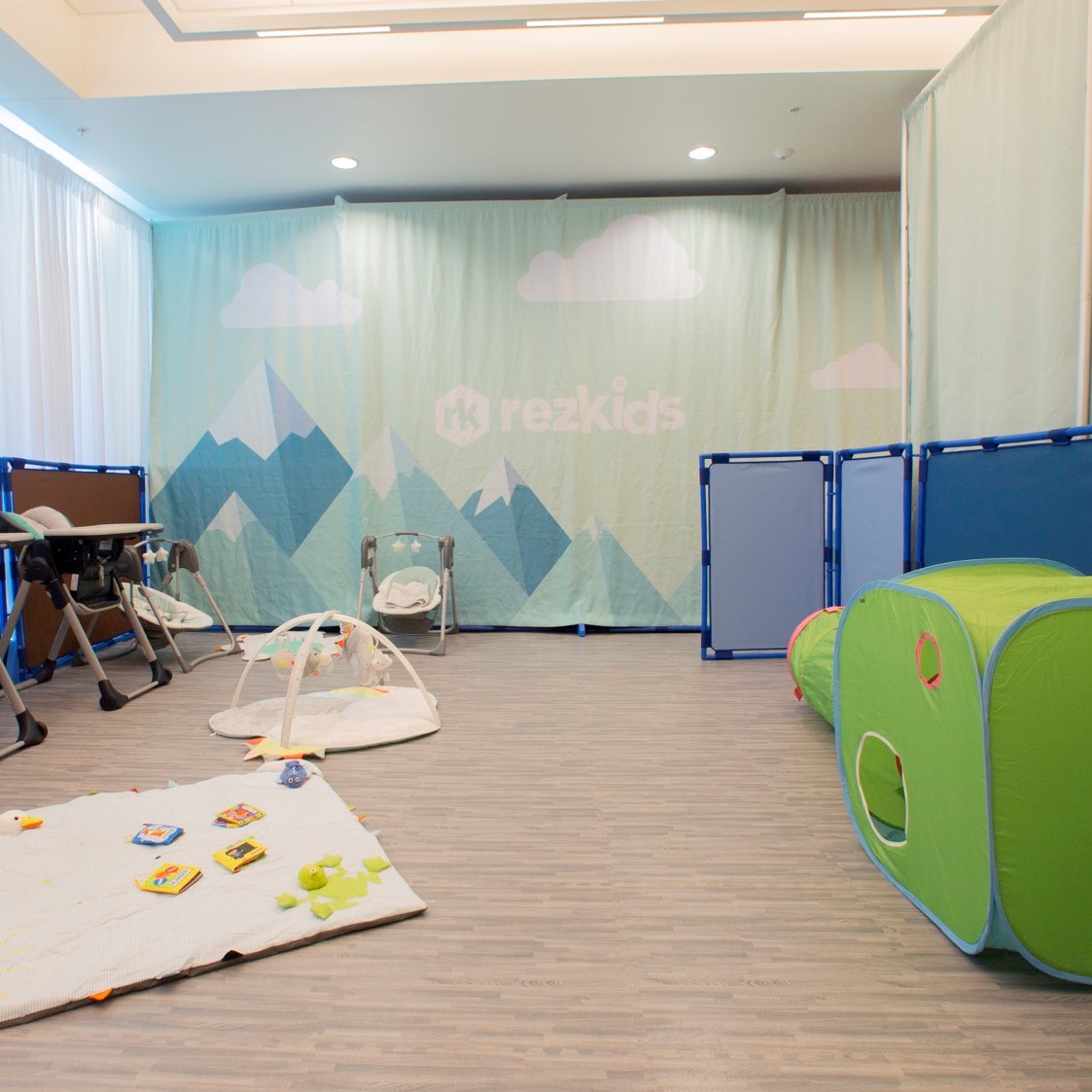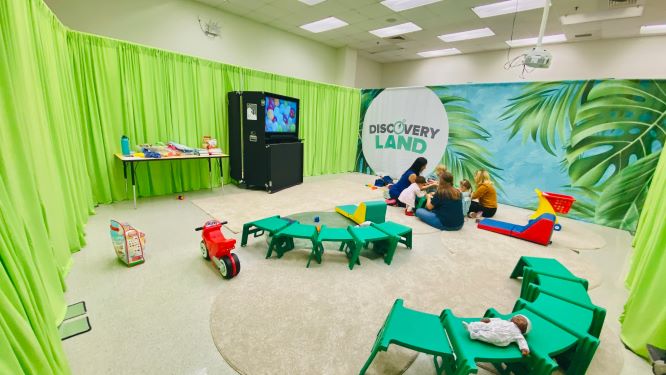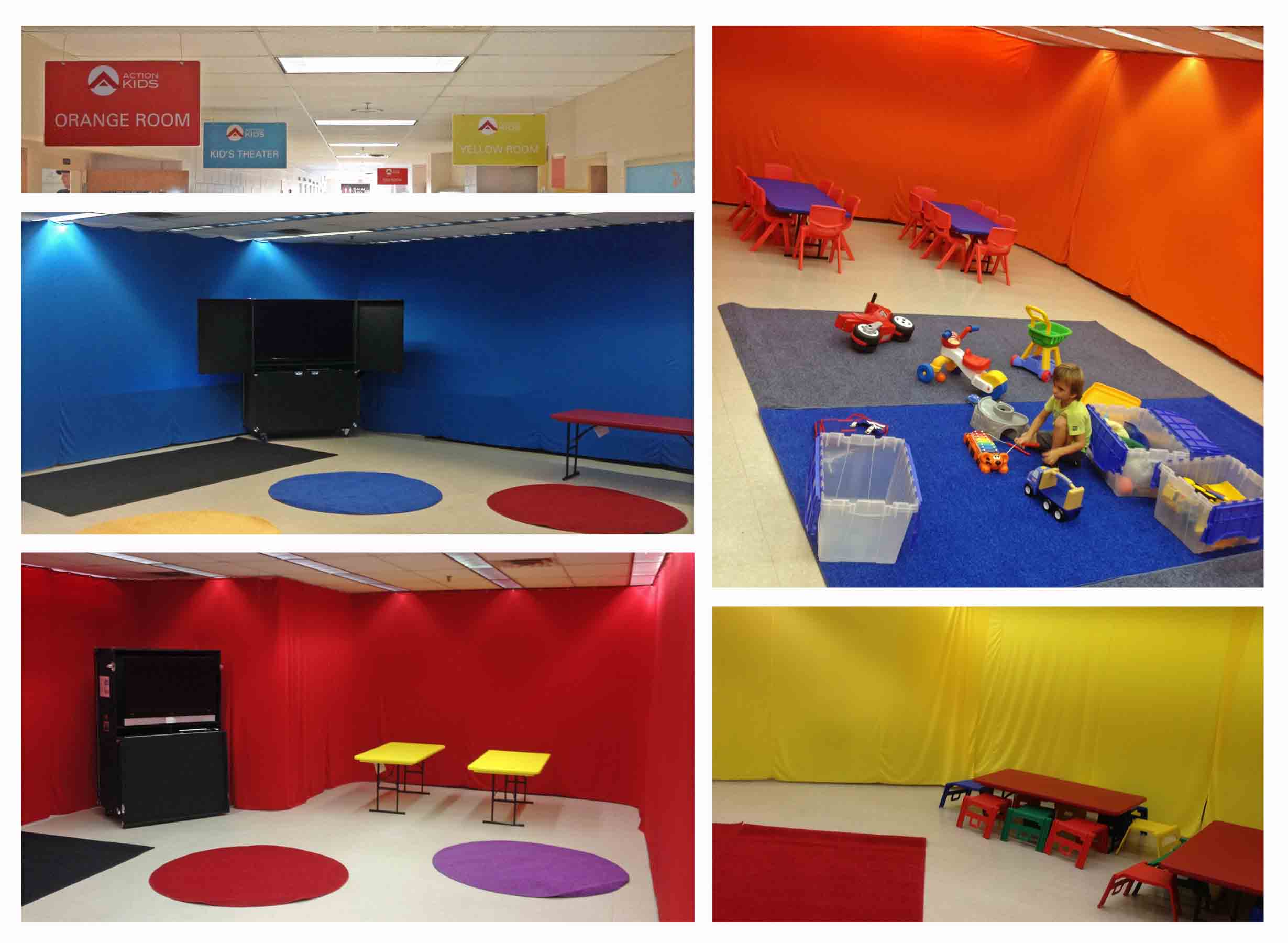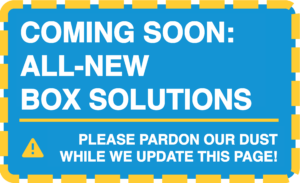
Church Launch, Church Planting, Mobile Churches, Portability
Innovative churches will win after this crisis
So much discussion right now is being centered around one defining question… “What is the future of the church is going to look like?” As we plan for that future, we do so with the understanding that society will emerge from the COVID-19 pandemic, and the Church will probably look different than how it looked when 2020 began.
So many church and world leaders are discussing this topic right now, and we love it! But we want to look beyond the immediate of this global discussion and consider what it means for the Church to launch out of this season of isolation with great momentum. The present situation should not be slowing down your future plans of multiplication. If anything, it should be increasing your thinking and opening up your mind to new creative solutions and innovations.
Innovation leads in times of crisis and change, and what better innovator to lead during this time than the Church. Now is an opportunity for new strides to be made for the advancement of the Kingdom, and we must take full advantage of it and see it as opportunity rather than adversity. As we navigate this time of uncertainty, many churches will be tempted to cling to a known method. It’s familiar, it’s safe. What a method struggles to be though, is innovative. Now is the time to step out into unfamiliar territory, be bold, creative, and lead.
Many churches are already doing such things. For most, live streaming has been a step of faith into unknown waters. They had to think differently and approach ministry from a vantage point they may have previously not had. It was scary and unfamiliar, but they were using innovative techniques to give their congregation the tools that allowed them to continue to gather together. As we continue through this virtual world, there’s incredible things we see on the horizon.
Finances, Scalability, and Adaptability
During this time of virtual-only church, some may have seen a significant decrease in tithing. Significant enough that it could potentially dismantle plans for planting or opening your next campus. We need to remember though that God is bigger than this pandemic and the Kingdom will continue to grow. In times of crisis people tend to lean into their faith more. So use this time, not only to continue your growth strategy, but to position yourself for potentially even larger growth than you originally planned for.
For portable churches, the ability to be flexible has proven to be a great asset during this time. It’s allowed them to not be “financial strapped“ to a mortgage or rent, flexible enough to move from space to space, and has an initially-established infrastructure that has lended itself to weathering this storm (i.e. online giving, etc.).
Portability also allows churches to launch with significantly less capital than needed when building a facility. Rather than spending potentially millions on a permanent building, a portable solution with the same level of excellence and ministry impact is often 10% or less of your permanent building cost. Our take-away… a decrease in giving does not need to prevent your plans for growth.
Scalability and adaptability are two additional and very important factors when considering portability. The future of physical gatherings is still unknown, but the possibility of enforced max gathering numbers of 50, 100, or 250 people during the summer, fall, and/or winter months is a very real possibility. Portable churches, however, are prepared for this possible regulatory action by allowing you to easily expand and grow as the gathering numbers increase and restrictions are lifted. As physical gatherings grow, PCI solutions allow you the flexibility to easily increase in specific areas to accommodate growth. Then once your church outgrows your facility, the solutions are able to adjust and adapt to your new facility. Portability gives you the tools for innovation and creative thinking within the framework in which you fulfill the vision God has given you for your church. Launching portably can work to your advantage once life after COVID-19 begins.
Planning for the Future
As we began 2020, churches had big plans and goals for what the year would look like, none of which included a pandemic. Even though your plans for 2020 might have paused, it is now time to shift your thinking and readjust. You can still launch this fall! September, October, and November are still going to come, and if you keep moving forward we can help you prepare for it with the solutions you need. Now is the time to strategize and plan for the fall. This is just a moment, not a ‘forever’. The Church is rising up, and developing incredible responses to meet the new needs of the people. All of this leads to the exciting certainty that local churches will flourish once we emerge from this season, and we at Portable Church® Industries want to help you prepare for the future we (the Church) have ahead of us.
Venue Options
We’ve heard from some pastors their concerns of schools no longer opening their facility to outside renters permanently, including churches. While this may impact some churches across the country in the short term, we have many reasons to believe this will be temporary (see video for more details).
But ultimately, the reality is that portable churches have many venue options beyond that of schools. Portable Church® solutions are designed with the intention of being just that… portable. Moving locations is extremely simple and easy to do with very minor modifications to your portable solution depending on the venue. Check out our Ultimate List of Portable Church Venues, one of our many free resources available, to help you consider the countless other possible locations where your church can meet.
Some Unique Features of portability
If you’re considering portability, here are a few other reasons it might work for you…
- You can launch fast – In just 3 months you can get a fully customized solution with everything you need to be operational.
- You can launch cheap – Compared to spending millions or hundreds of thousands on a building, portability allows you to launch at a fraction of the cost.
- Your Portable Church® solution grows with you – Portability allows for flexibility in times of change, and as we are seeing now, flexibility will be important for the church of the future.
Conclusion…
The world is changing before our very eyes. Even though the method of church may change, the mission remains the same. During this season of uncertainty, it is clear now more than ever the fact that the church is not a building, it is people. We are hopeful that as we emerge from this moment in time, the Church will be bursting at the seams with people ready to grow in Christ.
Let’s innovate together!
Click to Talk to an Expert
Write us info@portablechurch.com
Or call 248-705-8660

Equipment
It’s as controversial as pre-tribulation, mid-tribulation or post-tribulation… more hotly debated than Bieber and Kanye being real Christians, more pondered than the effectiveness of essential oils. Many churches we work with have strong feelings about this topic. It’s a tale as old as time. And that is buying a trailer vs box truck.
Every portable church whether new plant or multisite, will fall on one side of the line and typically have opinions about it. Many fall into the same camp, but not all! So let’s jump right into the conversation about pros and cons.
Trailers
Anyone who has worked with us in the past will tell you that we are huge advocates of buying and using trailers to transport and store your portable church gear. And after doing this work for over 25 years, we have some good reasons to back us up.
We recommend trailers because, to start with, they are much less dangerous to load out and load in. Trailers have a significantly lower ground clearance, so the ramp is not very steep and the transitions are smooth. This is significantly safer for the multiple trips volunteers will take up and down the ramp. Besides making it easier to physically move around, the chances of gear falling off and getting damaged are very low. Because a trailer ramp is such an easy way to roll out your cases, the time it takes to unload is blazing fast. An entire church can be unloaded and in the venue in 5-10 minutes, easy.
If there is any type of issue with the pull vehicle, say your truck breaks down, it is relatively easy to find someone else with a truck to pull your trailer to your location. You can simply un-hitch the truck and hitch up another one to continue on. If you’re in a real pinch, even tow trucks can hitch up quickly and get your trailer to your destination.
To be fair, there are some cons to trailers as well. The biggest one being that it does take some skill to back up the trailers. Something not well know is that the larger the trailer, the easier it is to back up. Smaller trailers jack-knife quickly when backing them due to the short wheelbase. The wheelbases on longer ones are further back and you see the transitions easier as they are slower and much easier to correct. With that in mind – it’s probably best to not let just anyone transport your trailer. We recommend having select people on your set up team responsible for this job.
Box Trucks
We understand the temptation for church planters and campus leaders to want to utilize a box truck for portability. We really do. And sometimes when you find that killer box truck deal it’s tough to budget for the right trailer, and we understand that too. We just have been in the business long enough and have heard enough stories that we try not to recommend it, with that in mind, we are aware that each church is unique and we trust pastors to make the best decision for their church.
The most compelling advantage to having a box truck is that they are budget-friendly! You can usually find one for a pretty good deal. In addition to that – most people can pick up driving them quickly, so a wider range of volunteers can transport your equipment.
Box trucks might also make sense when your venue has a loading dock that empties right into the location that your gear will be used. Just be sure you have a long term rental agreement in place or ensure your next venue has a loading dock as well. The last pro is a blessing and a curse (explained later) and that is simply that it is both truck and trailer in one contained unit.
Box trucks are much higher off the ground than trailers, making a steep ramp or liftgate for unloading – both of which can be hazardous. In addition, liftgates slow the unloading process down by typing up additional people to help secure the load as well as adding minutes to the “up-down” process of a liftgate. You will find people often waiting for their next load to haul in. Liftgates and steep ramps also create many stories of things falling off. Due to the height of box trucks you put your gear and team at a higher risk. Not to mention that if the liftgate stops working you have to unload things by hand (which is another layer of danger). This has caused knee injuries, back injuries, hernias, and worse. One of our pastors from a highly known church who went this route encourages us to tell people about his story after he ended up with 2 knee surgeries and a hernia. “People need to know about this!” he says.
The last disadvantage (and curse mentioned above)… If your box truck breaks down, getting another box truck on short notice on a Sunday morning is not fun. In fact, it can be near impossible. In the best-case scenario, if you do happen to have another box truck, transferring the equipment is difficult. Although box trucks are easier to drive, once it’s on-site, they are not that great.
In conclusion…
We know that the cost is a very important piece of the puzzle, but so are your volunteers. So before you decide, you will have to weigh out the long term impact on you as the pastor as well as all that you will be asking of your volunteers.
One last thing to note – when thinking through drivers and owners of trucks to transport your trailer/s, consider people in these professions (they usually will have some experience with towing trailers): construction, contractors, farming, people with tow trucks, landscaping, or people who work in a warehouse. Ask your launch team if they know anyone in their circle who has a truck and list the professions above. And if you can’t find anyone, drive by your local Walmart or Home Depot, find the perfect truck and wait for the driver to show up. Even offer to pay! We’ve actually heard some pretty cool stories of people coming to Christ because they were hired to transport the trailer of a portable church! How cool is that?!
If you’d like to talk more about this and your specific situation or have more information to add to the conversation – we’d love to talk! Call us at 800.939.7722 and check out our trailer gallery here.

Church Launch
Have you found your perfect portable church location?

After finding a facility for your church, corralling a group of cheerful volunteers, and setting a launch date, you are ready to open your doors! You can’t wait to create a portable church family, change lives, and impact your community. But will your launch be successful? Will all of your hard work and preparation inspire new visitors to become regular attendees? Make sure you have these seven things to ensure a successful launch weekend and provide your congregation with a life-changing, God-filled experience.
How many parking spots does the facility have? Are there too few? Too many? If there isn’t enough parking, are you providing easy transportation options (shuttles or buses) from a public parking area to the facility? How far is the walk from the parking lot to the children’s drop-off area? Is there a parking lot closer to the children’s area for families? Will your congregation be so large that you need volunteer parking directors to help with the traffic flow?
While parking may seem like a trivial detail, it really does matter! On average, there will be 1.7 adults per car. You need convenient parking for your church members, and you need enough of it to support the number of people you hope to have at each service!
2. Clear Signage
People choose whether they will return to a church within the first seven minutes of their church experience. First impressions are very important and signage plays a big part in setting the tone. Whether your facility is large or small, you don’t want any first-time visitors getting lost before they make it to the worship experience!
Where can they get coffee? Where can they drop off their children? Where can they fellowship and make connections? Can visitors easily navigate the facility on their own? A basic rule of thumb is to always have a sign in view. When a first-time visitor is standing at a particular sign, there should be at least one other sign in view. They should be able to quickly and easily find exactly where they need to go, so that they can truly enjoy and experience your community.
3. Restroom Facilities
Any time you bring together a large number of adults and children, it is important that you also have plenty of restrooms. Believe it or not, there are actually international standards stating the minimum number of toilets per attendees for places of worship. The recommended ratios are 1:75 for women and 1:150 for men.
The ultimate thing to consider with your restroom facilities is the comfort and privacy of all those attending your church. You don’t want anyone (especially a child!) to have to wait a long time for an available toilet, and you also want your restrooms to be accessible and easy-to-find for first-time visitors.
4. Safe and Fun Children’s Area
Of course, you aren’t going to set up your children’s area in the facility maintenance room! But no matter where you set up the toys and Bible story pictures, you want parents to feel comfortable leaving their children there. Are these areas clean and secure? Do you have trustworthy, reliable volunteers caring for the children? Have you provided plenty of activities to keep the children entertained, happy, and, most importantly, tear-free?
If you provide a cultivating, fun, and educational environment for the children of your congregation, you will encourage their parents to continue attending. And hopefully, even invite their friends!
5. Comfortable Seating
Do you have enough seating to accommodate all attendees? Do you have too much? Will the service feel empty? Is there room for growth? If you have too many seats, what are the budget implications if you need to cover or hide sections?
It is important that you provide comfortable seating options for the members of your congregation. The last thing you want while you’re giving a sermon is to have everyone squirming in hard, unsupportive chairs. At the same time, plush stackable chairs can be a huge ‘cubic volume cost.’ If these chairs take up half of your trailer space, you need to factor in half the cost of the trailer in addition to the cost of the chairs. If the chairs take up so much space that they require their own trailer, your costs will be even higher.
If the seating is comfortable, you want to ensure that you have enough space for people to feel comfortable inviting friends to church without concerns for having a hard time finding a seat.
6. A Great Audio/Video Experience
If you’re going to use audio and video technology, then use it well! Some people will argue that the church experience isn’t about ‘entertaining’ attendees. Others will argue that what you present is a reflection on how you value them. You don’t want to distract from the sermon because the slides do not match what the speaker is saying, or the wrong lyrics appear during the worship experience.
If you are going to employ any tech, it needs to work well. And, everyone should be able to see and hear clearly from any seat in the sanctuary space.
7. A Welcoming Atmosphere
Do you have volunteers eager to greet and interact with first-time visitors? Are you ready to welcome these visitors, make them feel like family, and maybe even offer them a free cup of coffee?
Even if the facility is immaculate, the music is amazing, and the sermon is inspiring, the connections that new visitors make with existing members is ultimately what will help them grow into fruitful members of your church community. As mentioned earlier, you only have 7 minutes to make an impression. Environments and the tone your people set are huge.

Want more tips and statistics on how to choose and use your church facility to its full potential? Download our FREE eBook, Choosing The Right Facility For Your Portable Church. Learn to avoid the mistakes that others have made and make your launch an enjoyable experience for everyone involved!

Case Study, Portability, Technology
City Light Church broadcasts their weekend service from a warehouse
With the reductions and restrictions of large gatherings over the past week, churches all over the world have been forced to create a space for their church family to gather together on the weekend, without physically being next to one another. For portable City Light Church in Rochester Hills, MI, this meant immediate action of creatively deciding how to continue meeting after being asked to vacate the school they were meeting in until the threat of the coronavirus has subsided.
Not ever having live video streamed their weekend services before, and after seeing the release of the portable live streaming kits (CODE Series) announced by Portable Church® Industries and Resi, the leadership at City Light decided the NCODE Series 1 was exactly what they needed to continue their weekend gathering online.
“On Wednesday, March 11th, 2020 I received a call from our school telling us that due to the virus they were canceling all reservations and outside renters effective immediately,” Lead Pastor, Jason Rollin, says. The school has not given City Light Church a return date, nor an exact process of how they will be notified of a reinstatement of their rental agreement. Since the school is complying to state and federal requests to temporarily shut the school down, once those authorities give the ‘all clear’, City Light will be allowed to return.
When asked what his initial thinking and plan was after the school informed him of the shut down, Pastor Jason explained, “My initial thinking was simple… how can we still have church? I remembered getting emails from Portable Church® Industries about their new live streaming solution in the beginning of March. I never thought we were ready or in a good place to begin live streaming yet, so I didn’t give it much thought at the time. But when everything happened with our  school, I immediately remembered the emails from PCI.” Pastor Jason goes on to explain how he immediately called Portable Church® Industries after being notified of the shut down and asked if the new CODE Series streaming solutions would work for them. “They were very confident this could be an answer to prayer. After checking to see how many they had left in stock, they discovered there was only one more unit available at the time. I said yes, I’ll take it!”
school, I immediately remembered the emails from PCI.” Pastor Jason goes on to explain how he immediately called Portable Church® Industries after being notified of the shut down and asked if the new CODE Series streaming solutions would work for them. “They were very confident this could be an answer to prayer. After checking to see how many they had left in stock, they discovered there was only one more unit available at the time. I said yes, I’ll take it!”
Within 48 hours of being notified to vacate the school they were meeting in, City Light Church received their NCODE Series 1 live streaming solution on Friday, March 13th from Portable Church® Industries. After receiving the NCODE, they were given an on-board training call from Resi that same day for assistance and guidance in setting up and learning the Resi streaming platform. Within minutes, they were operational and prepared to live video stream their worship service for that Sunday.
“Our church was so excited when they heard the news that we would still have church on Sunday! They couldn’t believe that even though we are a portable church, and a fairly young church, that we could have the capability of doing this in spite of everything going on in the world. Our people got so excited that they started organizing ‘watch parties’ at different homes throughout the community where they would watch service together and still have limited fellowship,” said Pastor Jason.

By using a CODE Series live streaming solution alongside the Resi streaming platform, City Light Church was able to simultaneously live video stream to their website, Facebook, and YouTube on Sunday, March 15th. With an average weekly attendance of 400, Pastor Jason estimates their online attendance on Sunday reached 358 viewers via their website, 1,286 viewers via Facebook, and 110 viewers via YouTube. 1,754 people not only viewed City Light’s livestream on Sunday, but virtually worshiped our Lord together through the internet.
When asked how easy the NCODE Series 1 was to setup and use, this is what Pastor Jason had to say… “The CODE was incredibly easy to setup and use. The on-boarding call from Resi was so great and easy to understand. They really made it user friendly for people to get started right away and their customer service team was amazing. They answered emails within 10 minutes and their tech support on Sunday was simple. No wait, answered my questions, just perfect. One of the features I love about the solution is after we film our live service, we can then rebroadcast that message as many times as we want that day as if it were live. It gives people multiple opportunities to watch the service. You can still preach the Gospel to your congregation through the internet even if you’re not the biggest tech guy or don’t have a big tech team.”

The easy-to-use and portable NCODE Series 1 live streaming solution allowed City Light Church the ability to broadcast their worship service from a remote location (a warehouse), and gave their church family the opportunity to gather together via live video streaming online. With the situation we as a society are currently facing, there is much uncertainty and fear. But we as a body of Christ have hope and know that God is bigger than any sickness. Ministry does not need to stop just because the world has. Pastor Jason says it best, “Portable Church® Industries and Reis have made the CODE Series so incredibly simple to live stream that I truly believe anyone and any church can live stream on Sunday mornings. Because of our displacement, we are literally filming our service from an old warehouse. If we can do it, you can too. This is a unique time in history. People in the world are looking for hope, and we have the opportunity to continue to share that hope. Church might look differently for a few months longer, but embrace technology and watch what Jesus does!
Written By: Matt Groves, Director of Consulting
For more information on Portable Church® Industries and Portable Church® solutions, please visit portablechurch.com. To learn more about the Resi streaming platform, please visit Resi.io.
To view all CODE Series streaming kit options, click here.

Announcements, Equipment, Technology
Simple, easy-to-use streaming kits for those wanting to get started quickly
In light of the coronavirus outbreak, many churches around the world have recently been faced with the urgent task of continuing ministry activities in creative ways. For many, this means that online church via live streamed video has moved from a ministry tool to an essential method for their church family to remain connected.
In knowing who our church partners are around the world and the tools they currently need for ministry, and will need in the future, we realize that many of you are in a hurry to get started with online church live video streaming, and we’re here to help.
As many of you may have already heard, Portable Church® Industries has recently partnered with Resi to provide portable live video streaming kits (CODE Series) with everything you need to get started, including cameras, tripods, and encoders. These packages are easy to set up, simple to use, and range in price depending on included hardware and features. For more information on the different CODE Series streaming kit options available, visit resi.io/products/streaming-kits/
If you’re just getting started with live video streaming, you may not know where to begin and what streaming kit is right for you. Some great entry-level options are the NCODE Series 1 Package (1 camera solution) or the NCODE Series 2 Package (multi-camera solution with switching capability). Even though all of the CODE Series options deploy quickly and are easy to use, these two solutions were designed specifically with the first-time live streaming church in mind. However, no matter the solution you choose, you have the assurance knowing you will receive the excellence and volunteer-friendly mindset you’re accustomed to receiving in a fully integrated Portable Church® Industries solution, paired with the reliable and high-quality video transmission of Resi’s web streaming.
Along with a CODE Series live streaming kit, a Resi service plan is required for broadcast. These plans include data for streaming, and tools such as automated scheduling, proactive monitoring, and phone/email streaming support (yes, even at 5 am on a Sunday!). Depending on the streaming plan you choose, options include Social Only streaming (simultaneous streaming to Facebook and Youtube), as well as Pro Web + Social streaming (simultaneous streaming to your website, social media, apps, etc.). For more information on Resi’s streaming plans, visit resi.io/contact
Through this season of uncertainty, we at Portable Church® Industries remain hopeful and know that God is in control of all things. Our mission is simple, yet significant… provide the church with the tools and the solutions that allow the church to be the church. Whether in times of growth and multiplication, or in times of virus, natural disaster, or any other obstacle, we will continue to be the industry leader and continue to provide you with innovative solutions that help you carry out your mission and spread the gospel throughout the world.
For more information on Portable Church® Industries and Portable Church® solutions, visit portablechurch.com.
Written By: Matt Groves, Director of Consulting

Multisite, Multisite Resources
The most critical asset a church’s leadership team can acquire is a big bold Kingdom-sized vision. Without it, we are assured that people all around us will be perishing (Prov. 29:18). This is why leadership in the church is not for the faint of heart!
Experience tells us, a clear and compelling vision necessarily brings a challenge to all who embrace it. Yet, it has always been impressive how leaders with a big vision always seem to figure out how to get it done.
For leaders who have a bold vision for Kingdom multiplication, and use a multisite strategy, will indeed face challenges. Great leaders get past the speedbumps, likely becoming more effective because of them.
Most multisite leaders will confirm, as a church exceeds two locations or more, there are two speedbumps that present themselves. The first speed bump is the challenge of organizational chaos. As the complexity of multiple sites grows, so does the challenge to reinvent the organizational structure to maintain order and effectiveness. The second speed bump is the continual need to develop and allocate physical resources. It is this speedbump that will be the focus for the rest of this post.
After working with multisite churches for over 25 years, churches are launching campuses into a variety of physical sites. Generally, it appears there are five ways to do it – and they all come with a list of pros and cons. Fortunately, or unfortunately, the church IS engaged in property and real estate concerns. The same wisdom we exercise to lead the church in matters of holiness and discipleship needs to be used to sort out practical matters such as this.
To start, we believe the best way for the multisite church to grow and thrive is to have some balance of these 5 methods of campuses. We LOVE launching churches portably, but we know each option carries its own advantages!
The diversified approach helps a church balance the urgency of the gospel imperative with the availability of capital, cash flow, and other resources.
1. New Build
When a church buys a piece of land and then goes to work dreaming, designing, and eventually building. This includes going through the lengthy and laborious process of vision casting, raising money, and getting loans.
- Pros: You get exactly what you want, It’s your vision, DNA, and Design, The final product allows a 24/7 presence, Community landmark, A sense of “we’ve arrived!”
- Cons: The most time consuming to do, Most expensive to do, High ongoing cashflow for maintenance, Becomes a lid to curb growth, Too big or small –once built it is what it is, Expensive mistake if it’s not just right, A sense of “we’ve arrived!”
2. Buying Existing Commercial Facility
Because of the way our economy is shifting, more big-box stores (Toys R Us, Circuit City, Kmart, etc) are closing and becoming available to the church (as well as other businesses).
- Pros: Usually already a GREAT location, Excellent accessibility and Visibility, Existing shell already built, usually accommodates zoning, Still flexible for interior build-out.
- Cons: 2nd most time consuming to do, 2nd most expensive to do, 2nd Highest ongoing cashflow for maintenance, Becomes a lid to curb growth, Too big or small –once built it is what it is, Still expensive mistake if it’s not just right.
3. Leasing Existing Commercial Facility
Leasing a commercial property for 5-10 years with good net terms.
- Pros: With the right terms Landlord deals with large ticket items (roof, walls, HVAC, Parking Lot, etc), Good Location, access, visibility, At contract termination you can extend or move, Interior build-out is flexible. Less of a permanent lid.
- Cons: May outgrow facility faster than expected, If you move, leave build-out investment behind, Must deal with commercial neighbors needs, Landlord may limit parking.
4. Mergers
Redemption process in the church where (typically) older exhausted churches get resources and renewed vision from a healthy growing and vibrant church.
- Pros: Existing structures with existing presence, Opportunity to pour in new resources to impact facilities or ministry, Established presence in community, Final product allows a 24/7 presence.
- Cons: Takes Time, patience, and leadership capital, Dynamic process requiring trust-building, Delicate language and body language required, Established presence in the community, Some hard ($$) & soft costs (people) could be involved.
5. Portably
Renting week to week the venue that you hold your service in.
We are going to do a much deeper dive into this in coming blog posts. We will consider whether or not portability can be done with excellence, and then talk about ten bonus benefits of doing church portably. This will prove to be a huge key to unlocking the possibilities for multisite churches with an aggressive multiplication goal to regain traction.
All of these methods and much more are talked about in greater detail in our new resource The Kryptonite of Multisite Momentum. Other resources include an eBook that talks about choosing the right facility as well as a Facility Cost Comparison Matrix.

Church Launch, Church Planting, Portability
Want to know the truth about portable churches?
Churches are meeting everywhere –In schools, hotel lobbies, cinema houses, parks and even casinos. Such portable churches benefit from reduced costs, greater flexibility and better engagement with the community.
However, certain misconceptions prevent churches from embracing portability, and its many advantages, with open arms. If you’re planning to launch a church, and are wondering if the portable church model is for you – this is just the post you need to read today! Here are seven common myths about “churches without buildings” – debunked:
Myth: A church without a building is not a “real” church
The idea that a church can exist outside of a permanent building, is an appalling one for many Christians. After all, the imagery of a whitewashed chapel with a steeple is deeply ingrained in our minds!
However, the church is the WHO, and not the WHERE! We have heard it all before – “the church is the people, not the building.” Your church, therefore, needs to be defined by its love for Jesus and each other, its heart for the unreached and its ministry in the community.
Do you really want your church’s identity to be limited to the space you occupy? A portable location for your church means that people cannot identify the church with a building. A mobile church is compelled to put the people first.
Myth: Setting up and tearing down is hard work
Rolling in, setting up, tearing down, rolling out – this weekly exercise by volunteers is what keeps any portable church running smoothly. Without the right equipment, structure and motivation, however, installing and packing up can be tiring and frustrating.
To avoid volunteer burnout, you need regular encouragement, a dash of creativity, and the right equipment and transportation solutions! Systems that are designed around your specific church needs will ensure that setting up and tearing down is efficient and hassle-free for your volunteers.
In fact, a portable church environment fosters a healthy volunteer culture. As more people come together to serve alongside, deeper relationships are formed, and a much-needed core team of volunteers emerges.
Myth: You can’t own the mission without owning the building
There is an unhealthy tendency in many of our churches to interlink their buildings with their vision and mission. In fact, the building sometimes has the danger of becoming the vision of the church!
With no building upkeep and maintenance to care about, the church can fully focus on people, relationships, ministry and community – all the stuff that really makes up the vision and mission of a God-centered church.
Myth: Portability is only for small, startup churches
Launching in a portable venue is the most practical option for a new church plant. After all, zeroing down on a permanent building during a church’s formative years can be a costly mistake.
However, the portable church model is not just a stepping stone for churches on the road to permanency. Portability is helping churches of all sizes save time and money, channel their resources toward ministry and outreach, and engage and invite the community.
In fact, Rolling Hills Baptist Church actually sold their 20-acre campus and moved to a movie theater – to be better embedded in the community!
Myth: Mobile churches attract fewer new people
Some think that portable churches can send confusing signals to those who might be looking for a “real” church experience. However, statistics paint a widely different picture. According to Lifeway research, new churches that meet in public places experience 42-49% increased attendance than others.
Unchurched people feel more comfortable attending gatherings in casual spaces like schools, theaters, gyms, and hotel lobbies. A traditional church setup, on the other hand, can be a roadblock for those who are new to the church context, or have been burnt by a previous experience.
Portable churches, therefore, offer a huge advantage in helping you reach the community and the unreached.
Myth: It is difficult to launch in a facility that is not designed to be a church
Churches that meet in restaurants, movie theaters, schools and gyms have to go out of their way to make the space work for them. Isn’t it simpler to move into a building that is designed to be a church?
No, not really! The advantages of the portable church model clearly outweigh any extra effort needed to transform a rented venue. In fact, a portable church setup offers volunteers unique opportunities for constant creation. Right from setting up a stage in a bowling alley to transforming a cinema into a fun and safe space for children, portable church volunteers can really let their creative juices flow.
In fact, churches have successfully launched in all kinds of bizarre portable venues, including a zoo, casino and fire station! Are you ready to start experimenting?
Myth: Your own building means more freedom
Your own building means that YOU can decide what to do with it, and can come and go as you please! Why should your church be restricted by the terms and conditions of a rental agreement?
Interestingly, churches actually enjoy more freedom and flexibility with the portable church model than in a permanent building. A church on wheels means that you can upsize or downsize to suit your needs. A permanent church, on the other hand, is a long-term commitment.
Portable facilities provide a unique and flexible environment to accommodate both church growth or decline. Why be stuck when you can be nimble?
 Are you planning to start a church? The decision to launch in a unique, portable venue as opposed to a permanent tied-down building might be the smartest one you make today.
Are you planning to start a church? The decision to launch in a unique, portable venue as opposed to a permanent tied-down building might be the smartest one you make today.
The experts at Portable Church Industries have been helping churches successfully move into all kinds of venues for the last few decades. Give us a call today at 800.939.7722, and we’ll help you find the perfect venue for your church services, too!
In the meantime, Download our FREE E-book today for all the tips you need in order to choose the right facility for your church! Find the Right Venue For My Portable Church.


Multisite, Multisite Resources
Superman’s only real threat, as it turns out, was Kryptonite!
When a growing church has a clear and relentless vision of reaching a given community or region with a multisite strategy, it will face challenges, or kryptonite, if you will.
“How do we keep adding new campuses in new communities?” Somehow, church leaders “miraculously” discover/create ways to beat the barriers and to thrive even more! Typical place and space challenges faced by multisite churches are illustrated here through the experience of LibertyLive.Church in Hampton, Virginia. The extraordinary expense and timing issues associated with providing facilities for multisite campuses can easily threaten momentum.
A real threat to derail multistie momentum
A growing number of churches are fully executing multisite as a part of their multiplication strategy for reaching new people in new communities. After nearly four decades, there appears to be no right or wrong models for multisiting – but there ARE ways to do it well and ways to do it poorly.
Sustaining momentum of launching additional campuses, especially after the initial 2-3 sites, proves to be significantly more difficult because of growing complexities. The necessity for new facilities in new communities presents new issues that could be crippling to essential momentum. The speed of raising resources, developing sites, perceived inefficiencies, and perceived ineffectiveness becomes a threat to the rhythm of growth established since initially embracing a multisite strategy.
Threats to LibertyLive.Church’s vision became real – A case study
LibertyLive.Church has been significantly blessed. In 2008, it expanded seating capacity by delivering the sermon via video to members seated in the church gym. This experience taught LibertyLive that what could be done across the hall, could also be done in communities throughout Hampton Roads.
A year later, the 100+ year multigenerational and multiethnic church, led by a new visionary pastor, began exploring what it would look like “to reach the entirety of Hampton Roads.” Soon LibertyLive began to grow with this vision in mind.
LibertyLive expanded capacity again with the construction of a 3,000-seat worship center. In the middle of all this activity, the leadership team became students of multisiting—a growing method of reaching more people in a region. They were keenly aware not everyone in Hampton Roads would drive to the Hampton Campus location. LibertyLive desired to launch campuses in communities where its members and guests live in order to welcome even more neighbors. Practically speaking, this meant LibertyLive’s vision was ten campuses by 2026.
LibertyLive.Church leased commercial property in the Harborview/Suffolk area and outfitted it to accommodate 550 seats for the gospel. After sending 250-300 members/attenders, the campus quickly grew to a regular weekend attendance of 700-750 at the new location.
LibertyLive.Church was compelled to lease a new flex space and built it out to include 825 seats. Having commissioned and sent another 172 members/attenders to worship at the new space, it grew to an average of 600-700 people after its first year. Regular attendance is now 1100+ each weekend.
LibertyLive.Church was blessed with an opportunity to merge with another church in the York River area. A building was gifted to them as part of the two congregations coming together. An investment was made to renovate, and the subsequent build-out provided an additional 300 seats. The new location launched with 230+ people between the existing members from the seed congregation and those from Liberty. Less than two years later, the York River Campus proudly welcomes 525+ each week.
Even with four campuses comprising almost 4,700 seats and average weekend attendance of 6,400+, more needed to be done to open new seats to the Hampton Roads region for hearers of The Gospel.
Growing comfortable with a culture of organizational adjustments, the Liberty leadership team came face-to-face with the challenges of their vision. Three new threats (two real and one perceived) to LibertyLive’s well-established rhythms and processes became factors that increasingly hindered growth.
The first two speedbumps were finances and time. Knowing what it took to establish four permanent 24/7 campuses, forecasting six more was easy. Considering the outcome LibertyLive wanted and the current pace at which it was expanding, there wasn’t going to be enough of either resource to reach the goal of ten campuses by 2026.
Unfortunately, the church’s method of buying and maintaining facilities was cost-prohibitive. Raising funds, developing a new venue and launching a campus was a slow process.
Additionally, LibertyLive had an expectation of doing all things with excellence, thus creating the third speedbump. As insufficient resources threatened the vision, would the church have to accept a hit to its high standards?
The conclusion: The LibertyLive way of launching campuses would have to slow down significantly, or change.
As it turned out, the kryptonite was not enough to deter LibertyLive from such a clear and compelling vision. However, the situation forced the church to innovate and trust God to provide a new solution so it could continue building physical capacity for the gospel, forever impacting the Hampton Roads region.
The church has a history of innovating
Churches adopt a multisite strategy for a variety of reasons. Oftentimes, multisites are established to serve as a space or reach solution. A methodology replacing the large regional church and the burdensome expenses associated with it is adding seats in surrounding neighborhoods.
Churches that end up as a multisite typically start with one prime time service becoming overcrowded. The next step in the progression to multisiting is adding services in order to experiment with new times, or even different days. Next, churches typically create additional venues on its main site, typically taking advantage of fellowship halls, gymnasiums and other common areas within the facility.
Once a church runs out of usable space and effective alternative service times, leadership must decide to go forward using one of the following options:
- consider doing nothing new, essentially capping growth
- expand current facility; incur the expense of remodeling maintenance and increased resources going forward
- sell the current facility, buy and start over (this time bigger) rinse and repeat
- start a program of planting new, independent churches; send a significant number of members “on mission” to nearby communities
- multisite! Become one church in multiple locations
The rest of the story…
The Kryptonite of Multisite Momentum is a new FREE RESOURCE designed for church leaders blessed with a white-hot vision for kingdom growth. Check out the rest of Liberty.Live’s story and how they continue to thrive today.
Complete this quick form for instant download:

Announcements
God did not bring us this far just to bring us this far.
While we are humbled by the impact we have made for the Kingdom over the last 25 years, we are pumped about what God can do through us over the next 25.
For Portable Church, opening up seats to hear the Gospel is our most important metric.
This does not mean we ignore other key metrics that assure we are strong financially and operationally, but our underlying mission, the reason we exist, is to assure as many people as possible know Jesus.
As we enter 2020 with new product and service offerings, as well as more efficient operations, we will set new and challenging financial and operational targets but we will also continue to track and celebrate ‘seats opened to hear the Gospel.’
Why? Two reasons. First, we believe, and studies support, new seats opened to hear the Gospel is the most effective way to assure the numerical growth of the Body of Christ. New seats are the best way to reach new generations, new residents, and new people groups. And this points back to our mission of more people knowing Jesus.
The second reason is what this metric does for our internal team members. Any organization knows the value of someone feeling a sense of purpose and significance at work is indispensable. Work that will outlive their time here on earth.
Not success, but significance.
Revenue and profitability, delivery performance and productivity, number of leads and close rates, are critical metrics to track to assure long term sustainability of a company. They measure the success of decisions made, actions taken, and money spent. But true significance goes much deeper.
And I am not talking about job satisfaction. I am referring to job significance. As Justin Sweeten, our Integration and Logistics Manager puts it, “Our company mission allows me to participate in something greater than myself.”
The Bible never promised us work would be easy. And at Portable Church, just like all other companies, we have some very hard and exhausting seasons. But having a company mission that drives something that will matter 50 years from now makes it easier to navigate the rough waters. Rachel Davey, our Administrative Assistant, says it best: “No matter how chaotic the day may be, we are able to set every difference aside and come together with the one thing that unites us all: Our love and belief in Christ, His love for humanity, and how we can make that known.”
And significant work is not only good for employees. It’s also good for the churches we work with.
So we will continue to improve our products and services. We will continue to make our internal operations more efficient. We will continue to strive to be the industry leader in portable systems. We will do all of this with passion and drive, knowing if we do all of these things well, more people will know Jesus, increasing the population of the Kingdom.
Bill Clark
CEO | Portable Church

Children's Ministry
Portable Hacks & Tips – Kids Ministry Nursery Room Wins
Raising up future generations to carry on the mission of the church is a HUGE and exciting responsibility! We as church leaders want to do all we can to develop kids who are Christ-followers and disciple-makers. So, how do we create environments for this to happen in a portable setting that will allow for both the kids and the parents to feel the same sense of security they would feel in a permanent facility, as well as cultivate an experience where young lives can be shaped by the life of Jesus? We want to provide some insight on how to transform your venue into the best kids ministry environments they can be. And it starts in the nursery with the babies…

1. Make a Good First Impression
We all know how important first impressions and gut feelings are. KidMin spaces may be the biggest of impressions that determine the return of a new visiting family. Bad first impressions are a hard thing to shake. So be sure the first impression they have of your nursery is that it is a safe, clean, and welcoming place. A place where they feel their babies will be cared for and loved on for years to come. Here is a checklist you can use to evaluate the first impressions new visitors get from your nursery.
- Is it clean or cluttered? What are the first things seen as you approach the doorway? Is it stacked desk legs pointing in the air? “Spirit” posters? Something else? Move or cover-up the messy spaces so they are completely hidden/unseen or if that’s not possible, at least arrange them so they are the last things seen.
- Stage the room so the first visitor arriving sees everything organized and inviting, not “pre-played” in. This does not only shows parents your attention to detail but also helps put volunteers in the right “attention to every detail” mindset.
- Playpanels are a great resource for nursery classrooms. They are still the single most portable friendly way to set up a nursery and also create a significant barrier/parameter for the children to stay inside of. This plays into the safety factor for the parents to know right away that their children won’t have access to any classroom supplies.
- Does your kid’s registration area give off a good first impression? Make sure it is organized, clean, and that you have the right volunteers (aka personalities) manning the check-in station.
2. Theme it Out!
Your kid’s ministry, in general, is a great opportunity for you to share the voice, culture, and values of your ministry. We highly encourage you to have a theme or a kid’s ministry brand identity throughout your classrooms. Some examples are…
3. Other hacks and tips!

We’ve been helping portable churches thrive for over 25 years now and we have learned much through new innovations and trial and error. Here are some other nursery wins that we have discovered along the way.
- Invest in durable things that collapse. We’ve spent decades finding or inventing things that stack and fold. This allows for more environmental pieces that move easily and take up minimal space in storage.
- Colored carpet circles help define gathering spaces, and create both beautiful and functional environments. Using multiple colors allows you to assign meeting spaces for small group time.
- Again, Playpanels, but did you know there are Playpanels with pockets for art display? This creates a fun showcase for your kid’s masterpieces!
- Use Kin-der-links for their versatility! These unique and highly versatile stools are used as a chair or a desk and can be linked to create a circle or zig-zag pattern or can be separated and used for independent play.
- Storage is key. All PCI Cases are designed to keep all your kidmin gear in the best of shape. Likely even a bigger bonus is that they are designed to make it fast and easy to set your spaces up. This leads to volunteer happiness AND retention!
At the end of the day, your nursery is as great as the effort you put into it.
We truly believe you can have a great kids ministry in a portable setting. And we are here to help you in any way we can. Please call us today to see how we can help you create incredible environments and happy volunteers.
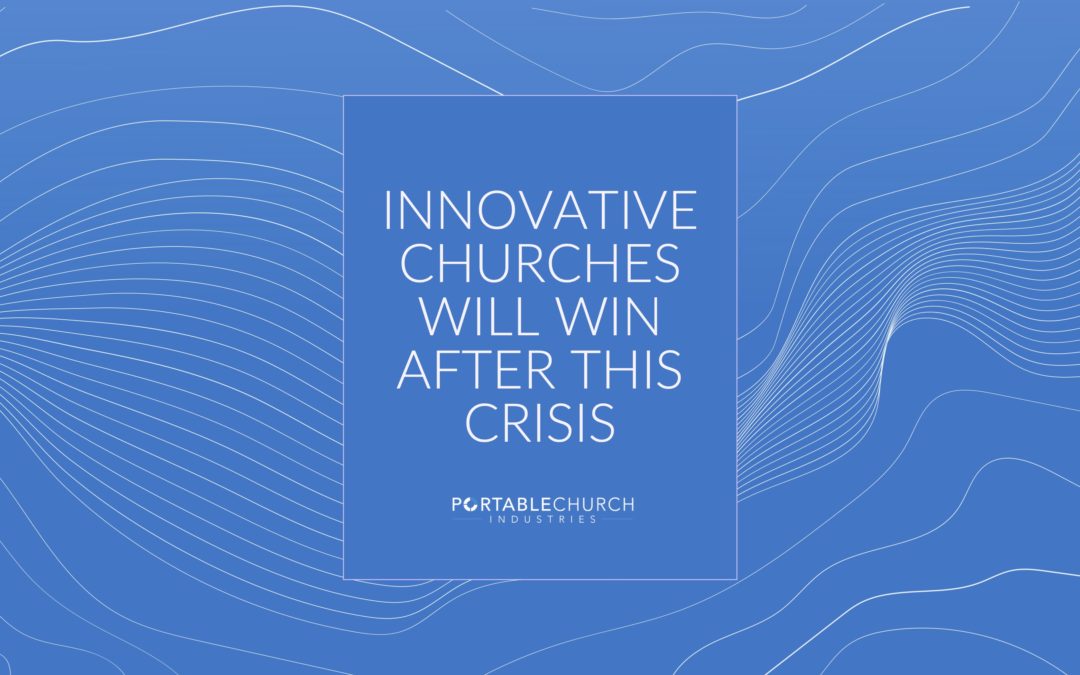

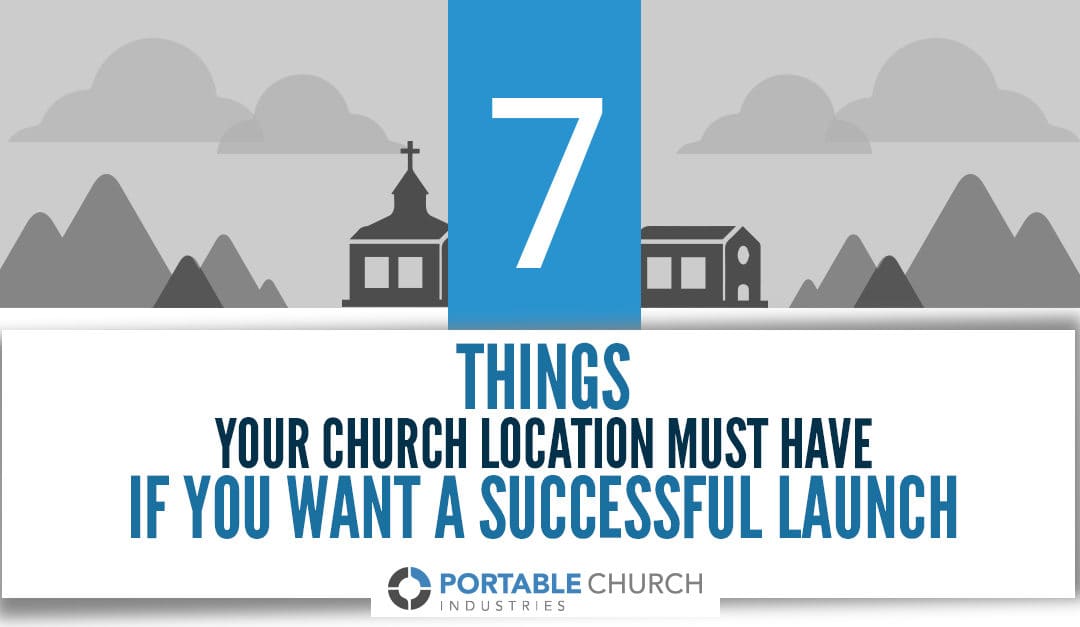


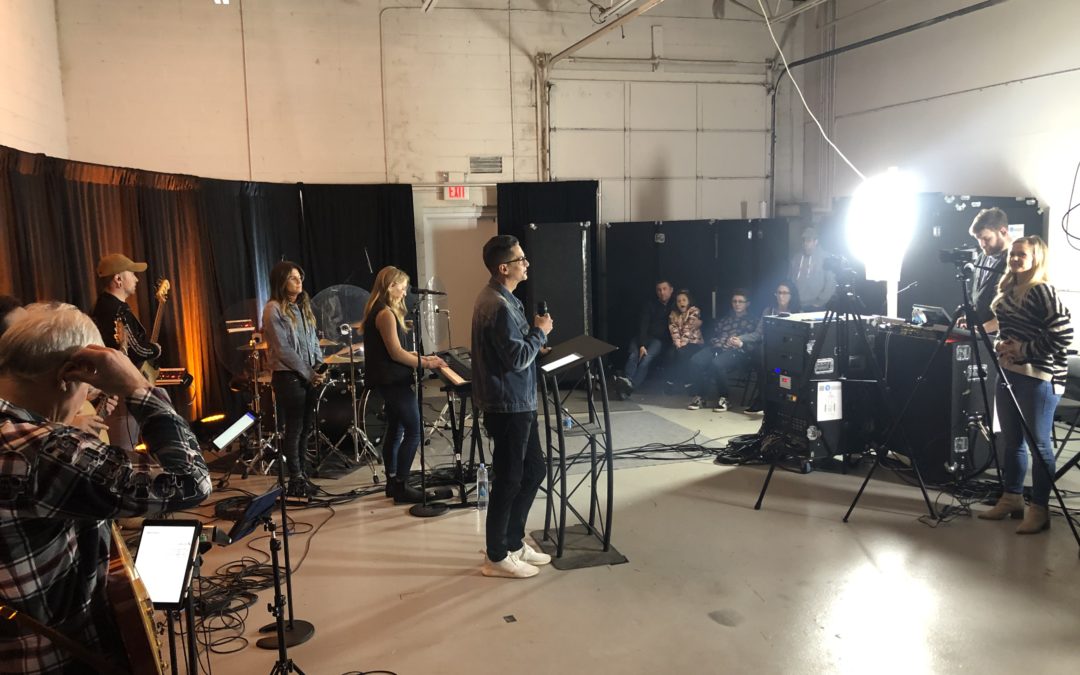
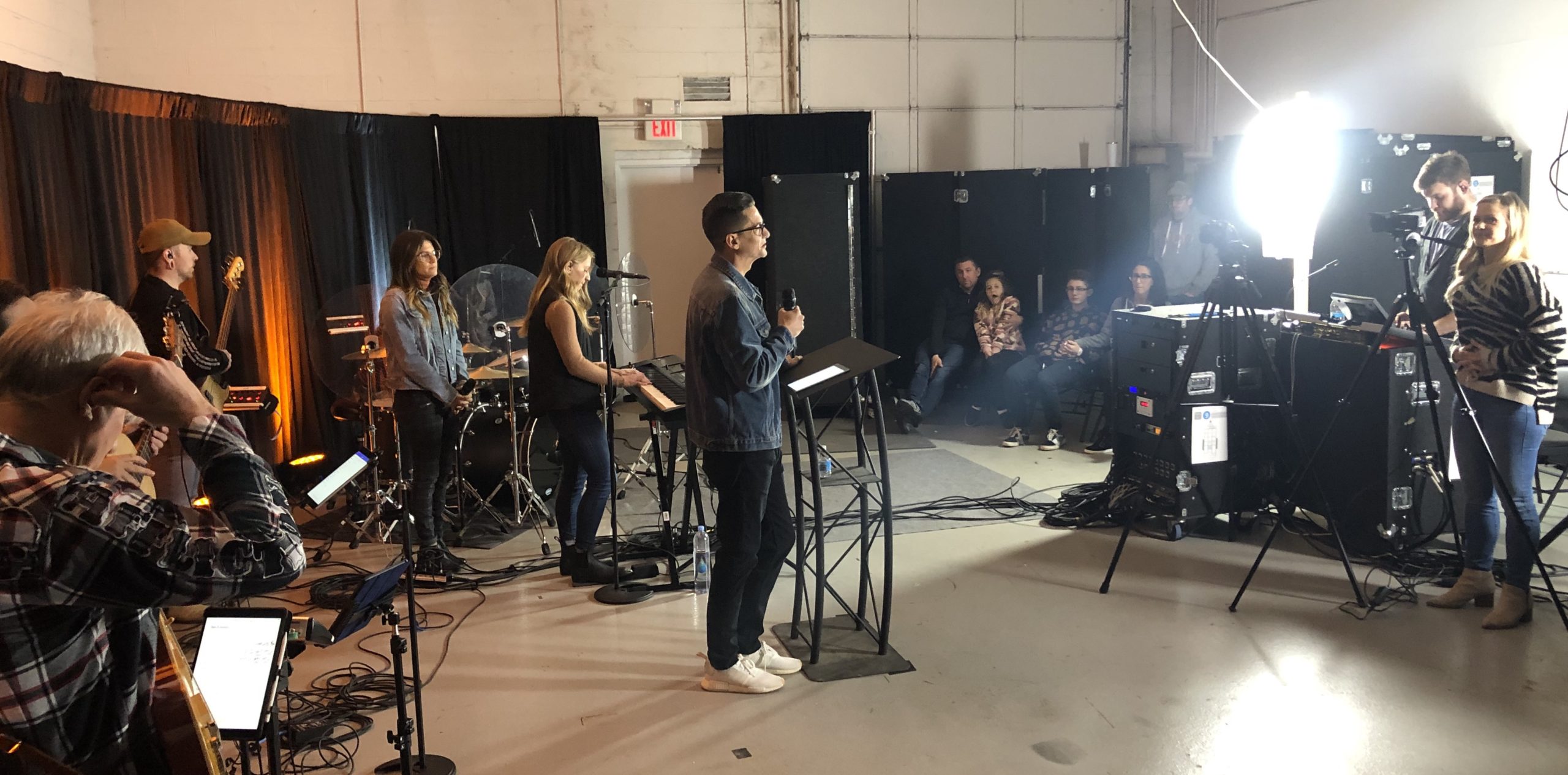
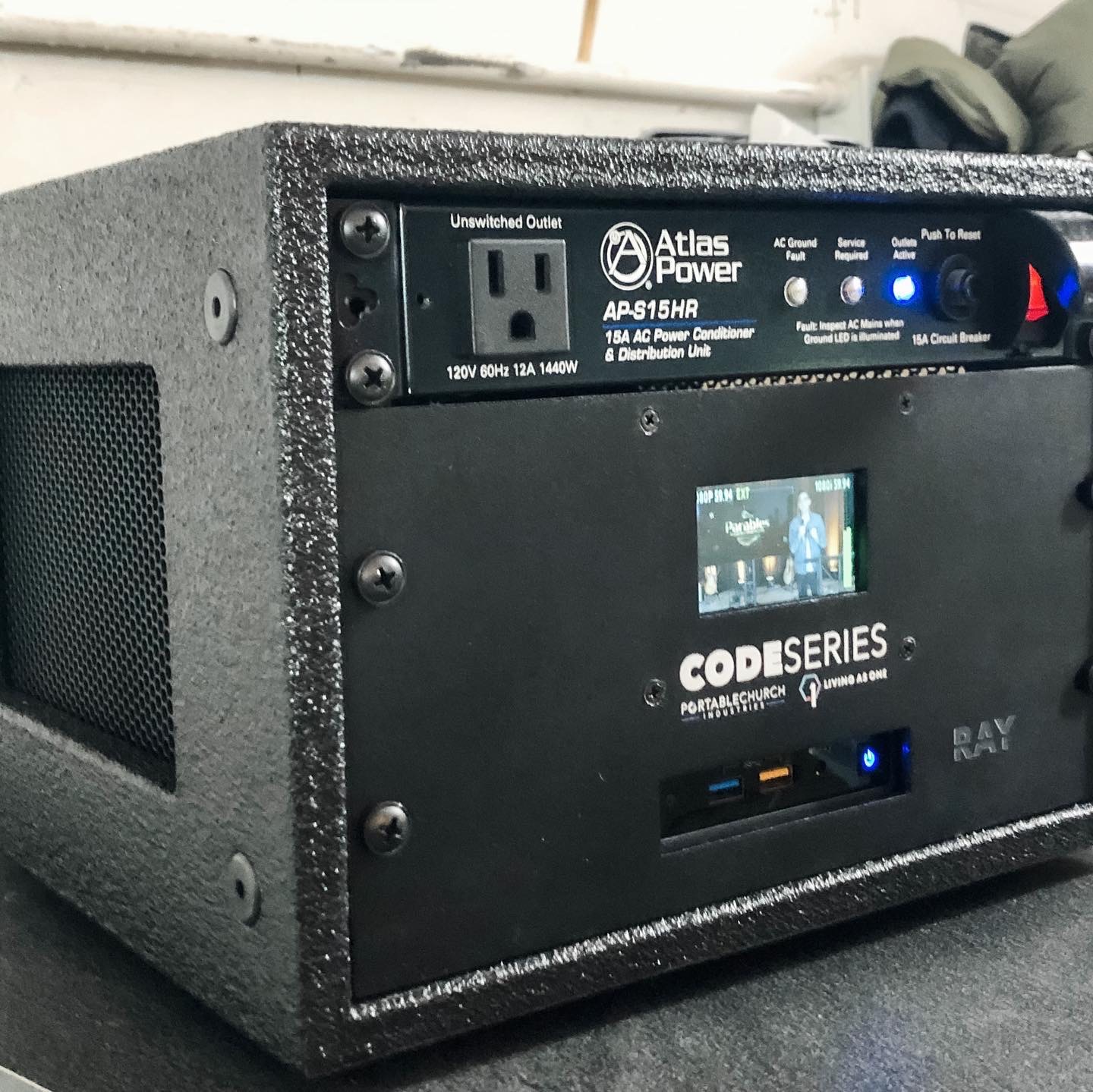
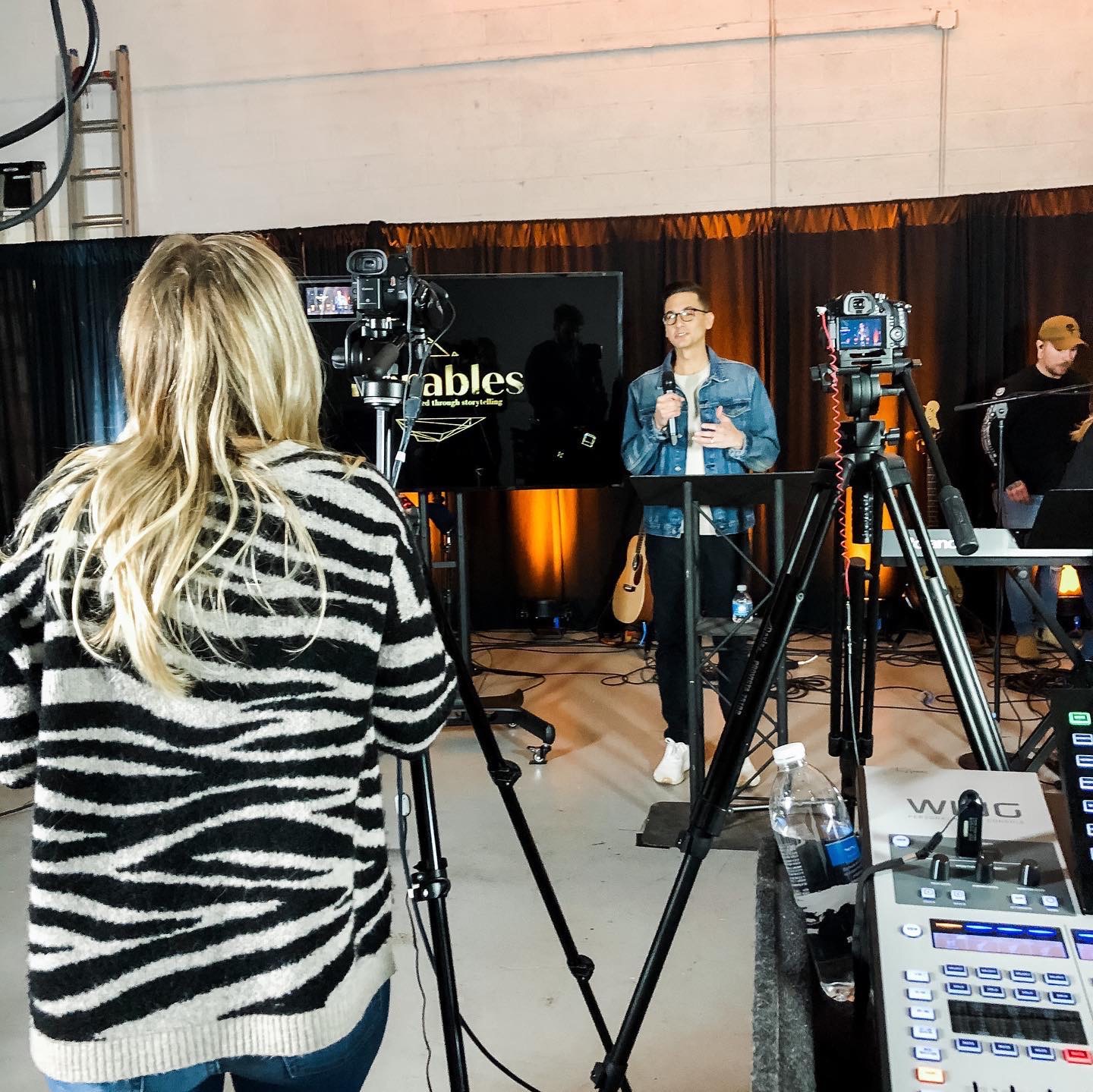 school, I immediately remembered the emails from PCI.” Pastor Jason goes on to explain how he immediately called Portable Church® Industries after being notified of the shut down and asked if the new CODE Series streaming solutions would work for them. “They were very confident this could be an answer to prayer. After checking to see how many they had left in stock, they discovered there was only one more unit available at the time. I said yes, I’ll take it!”
school, I immediately remembered the emails from PCI.” Pastor Jason goes on to explain how he immediately called Portable Church® Industries after being notified of the shut down and asked if the new CODE Series streaming solutions would work for them. “They were very confident this could be an answer to prayer. After checking to see how many they had left in stock, they discovered there was only one more unit available at the time. I said yes, I’ll take it!”